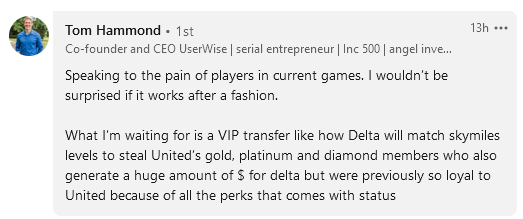I work as freelancer and consultant in this moment of my life. I also feel the need of building something mine, since the market right now is pretty average. More details in this video:
So I am fantasizing about building my own company or having my own team someday. Some wise man says that I should start from the vision, which is like the utopic preview of the World once my company has success.
The Vision of my hypothetic company
Well, that is my vision: our Players will remember our games forever.
Simple and clear. Somehow inspired by the Supercell vision: to create great games that as many people as possible play for years and that are remembered forever.
But without the “play for years” thing. I don’t think it matters anymore, I don’t believe that it’s possible with this average content storm we are living right now. Storm that is not going to end soon.
Plus, I do believe that looking for extreme growth is frustrating and leads to the creation of attention traps, not games.
The Values of my hypothetic company
Having said that, I would look for just game designers at my company. I mean, of course we would need artists, developers and so on. But I would always look for people with the special attention to the details that a good game should have to be unforgettable.
We are game designers
- We love to reinvent the wheel
- We make meaningful games
- We look for the smallest viable audience
- We want to be above the average
- We are patient
- We want to offer moments of fun
What are we not?
- We are not copycats
- We don’t want to create games for everyone
- We never develop minimum viable products
- We don’t want to be average
- We don’t rush
- We don’t want to trap people’s attention
